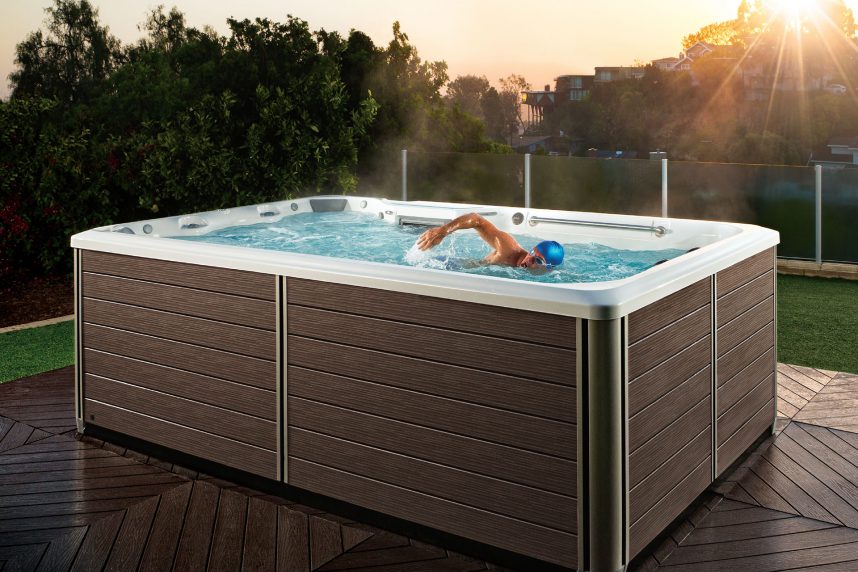One of the reasons I’m so into swim spas is for my Ironman training. I got into it about three years ago, and it’s changed my whole life. Fitness is no longer, “just something I do,” because I now have concrete goals in place to assure that I’m continually reaching new heights.
A lot of people ask me what my regular training regimen looks like. I begin by looking ahead a few months and selecting the Ironman competition I want to participate in. Then, I get with my trainer to put together a regular regimen that will help me reach my pinnacle of strength and endurance within the time frame I have to work with.
After that, it’s a matter of sticking with the program! Don’t forget how important those rest days are. Competitors tend to focus so hard on the workouts that they forget the other critical points: resting the body enough that your muscles can recuperate and get stronger, and of course, eating right to support the level of physical activity you’re doing.
Here are the pillars of my workout program. Be sure to connect with a certified trainer to work out a regimen for getting all these important routines in each week. And consider investing in a swim spa, which will help you get in those all-important swimming sessions when you aren’t able to get to the local public pool.
Running
An Ironman 70.3 is often called the half-Ironman, and you’ll be running a half-marathon during the competition. Many competitors find it the most challenging of the three disciplines (running, biking, and swimming), but adequate preparation keeps you going when those miles drag. How often should you run? For how long? For how far? This is something to discuss with your trainer. Just be sure to schedule your Ironman competition far enough ahead of time that you can build up the level of strength and endurance you need before the big day.
Biking
My usual regimen includes two different disciplines per day, with at least one complete rest day each week. For instance, one day I’ll run and bike. The next I might swim and bike, or bike and work out with weights. Be sure to select a biking course that is safe! Many cities are working bike lanes, sidewalks, and other safety features for bikers, or you can take advantage of local parks. Invest in the proper gear, including safety gear, and always wear light, reflective clothing. Just because you respect traffic doesn’t mean they’ll respect you on your bike, so always bike defensively. During the fall and winter, when it’s darker longer, take into account the best and safest time of day to be out on the roads in your bike. Realize how hard it is to see a biker when you’re driving into the blaring sun! But when done safely, you’ll probably find biking to be one of the most enjoyable parts of training. Choose a course that’s challenging enough, with ample hills, and curves to build muscle and skill.
Swimming
Of all the Ironman training, swimming is among my favorite. I regularly use my swim spa, because you don’t have to bother “turning laps” at the end of the pool. It produces an endless stream of water to swim against, and you can adjust the flow according to your fitness level. The best thing about a swim spa is that you can also use it for aqua therapy. It’s like a hot tub: you can use it to soothe sore muscles, rehab injuries, and relax after a hard day of training. Your certified Ironman trainer will help you determine how often and how long you should be swimming each week.
Strength Training
You will definitely be building muscle as you run, bike, and swim, but those are your endurance muscles. You’ll need to include weight lifting in your training regimen for the strength it takes to complete an Ironman competition. Your trainer will help you determine a good weight lifting regimen, but I have found that free weights are ideal for building strength, and are more useful to competitors than most weight machines. Remember, you’re building endurance with the running, swimming, and biking. Don’t be afraid to use higher weights and lower reps in your strength training, so that you get power in addition to stamina.
Finally, don’t give up! There will be days during training that you feel invincible. Your workout went great, you passed a milestone, and you feel tremendous. There will also be days that you feel like you lost ground. Those are normal. The important thing is to keep your eyes on the prize — be willing to rough it through the harder days and there will be more rewarding days on the horizon.
Happy training!
-Jay

